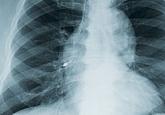A majority of Navajo preschoolers have untreated tooth decay, the leading chronic infectious disease among children in the U.S. At the same time, the Navajo Nation has one of the lowest dentist-to-patient ratios in the country, according to the Colorado School of Public Health.
In their study of 981 Navajo children in 52 Head Start classrooms, researchers from the University of Colorado Center for Native Oral Health Research found > 69% of Navajo children had untreated tooth decay. Moreover, the study concluded that half of all Navajo children would need to be treated in the operating room because of the severity of their disease.
Related: Doxycycline Safely Treats Kids With Tick-Borne Diseases
Alaska had a similar problem 10 years ago, when 87% of 4- and 5-year-old Alaska Native children and 91% of 12 to 15 year olds had tooth decay. In response, the Alaska Native Tribal Health Consortium launched the Dental Health Aide Therapist program (DHAT), opening access to dental care and prevention for more than 40,000 Alaska Natives in 81 rural communities. The DHAT providers clean and fill teeth, perform simple extractions, and provide prevention and education services. Nearly 80% of DHATs return to their home villages to practice; the program has an 81% retention rate.
Related: Aspiration of a Dental Tool During a Crown Placement Procedure
The number of Alaska Native children with tooth decay is still significantly higher than that of Alaska white children (about 83% of Alaska Native third graders vs 48% of Alaska white third graders, for instance). But the DHAT program has been markedly successful in bringing down those numbers. One DHAT therapist, interviewed by the Native Health News Alliance (NHNA), reported that in a school in which roughly 52 of 60 students had cavities, this year she saw 34 with none. She also noted that villages that have dental therapists are requiring fewer emergency flights.
Related: SAMHSA Awards Funds for Tribal Youth Programs
Calling Alaska “the best model,” Al Yee, a senior project advisor for Community Catalyst, a national consumer health advocacy organization, said in the NHNA article that other states are beginning to take similar steps to provide local dental care to Native areas in need.
